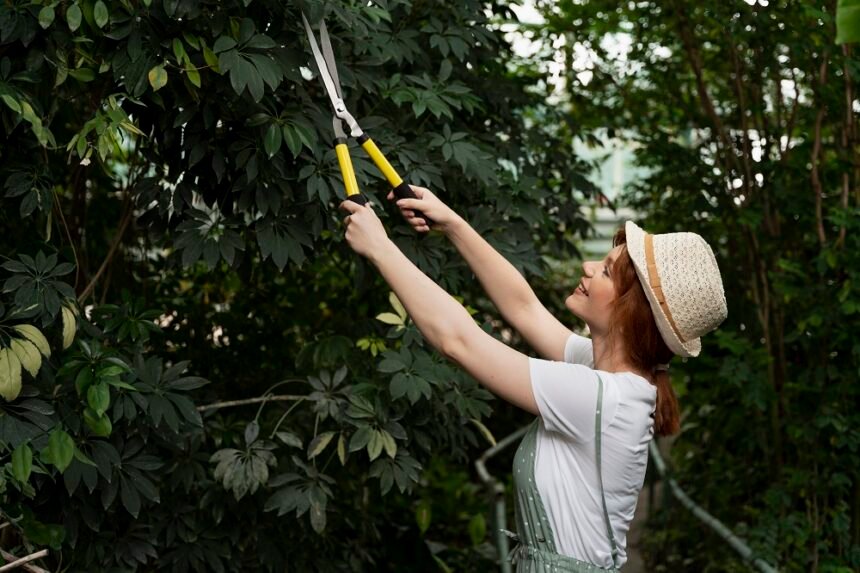From the stoic oaks that line suburban streets to the sprawling giants that populate virgin forests, our lives are subtly intertwined with trees. Ever wondered how these stationary, silent creatures directly influence the health of our environment? Or considered the role we play in this symbiotic relationship, particularly when we intervene in their natural growth processes? Today we’ll be unravelling one such interaction – the intriguing practice of tree pruning and its unfathomable role in sustainable environment conservation.
Trees, much like people, require care and maintenance to thrive. Pruning is an essential part of this ongoing care, shaping not only the lifespan and health of individual trees but also the landscapes they inhabit. While it might seem counterintuitive, this act of seeming destruction actually plays a significant role in promoting biodiversity, enhancing tree health, and ultimately supporting our environment.
By carving out the intricate relationship between tree pruning and environmental sustainability, we aim to draw attention to the unseen ties that bind us to our green companions.
Understanding The Art Of Tree Pruning
To appreciate the importance of tree pruning in environmental conservation, we first need to understand what it entails. Pruning involves the selective removal of certain parts of a tree, like branches or roots, to benefit the whole. By enabling healthier growth, we can make our urban forests more resilient, shape our landscapes and contribute to greener, healthier cities.
This process also stimulates responsible growth patterns in young trees, reducing the risk of disease and promoting the well-being of the plant. Furthermore, tree pruning allows for greater light penetration to the understory, a crucial necessity for many plant species to thrive.
Finally, responsible tree pruning reduces safety risks, especially in urbanized areas, without resorting to the more drastic solution of complete tree removal.
Tree Pruning And Biodiversity
How does the act of trimming branches enhance biodiversity? A well-managed tree, with the aid of pruning, fosters more diverse bird and insect populations.
Such controlled growth offers a balanced habitat for a variety of species. Opportunistic feeders and nesters find openings created by the removal of a branch. The food chain is complemented by the subsequent spread and growth of insects that inhabit these open spaces.
Moreover, through tree pruning, we weave varied structural patterns in our landscapes. These patterns, in turn, provide a range of micro-habitats, fostering greater biodiversity.
Environment Health And Tree Pruning
Trees are the lungs of our environment. They absorb harmful greenhouse gases and release oxygen, making them an essential ally in the battle against climate change. But these warriors need their armour too, and that’s where tree pruning steps in.
Removal of diseased, dying, or lifeless branches prevents the spread of tree diseases, reducing premature tree deaths, maintaining our natural carbon sinks, and supporting cleaner air. Inherently, a healthier tree contributes more to a healthier environment.
The Ethics Of Tree Pruning
Despite its irrefutable benefits, tree pruning should never be an excuse for reckless hacking. Instead, it should be a mindful process, undertaken with a deeper understanding of tree physiology, ecology, and the surrounding environment.
Poor pruning practices can severely disrupt feeding and nesting wildlife, inflict tree stress, and potentially lead to tree death. Hence, tree management should always aim for a balanced approach, preserving our green spaces conscientiously.
Do You Need To Prune?
Connections between environment conservation and tree pruning compel us to revisit the aim of trimming the trees in our gardens or local parks.
Is it merely for aesthetic curb appeal? Perhaps it’s high time we also address the environmental implications and ensure that this practice is carried out thoughtfully, sustained for the right reasons.
Conclusion:
As we unfurl the complex connection between tree pruning and environmental conservation, our perception of this commonplace practice transforms dramatically. No longer a simple act of landscaping, pruning becomes an instrument of sustainable environment conservation.
Tree pruning, when undertaken mindfully, can bolster biodiversity, strengthen the health of our urban and suburban forests, and contribute to our never-ending fight against climate change. However, the balance is delicate. Too much or too careless pruning could cause more harm than good.
Therefore, understanding the role of pruning as an environmental conservation tool is essential for every modern urban dweller. Let it guide us in our actions, whether we’re reaching for the pruning shears in our own backyards or advocating for responsible tree management in local parks.
Our ability to protect and foster our environment truly begins at home. And tree pruning, in all its simplicity and complexity, is a prime example of this adage.



